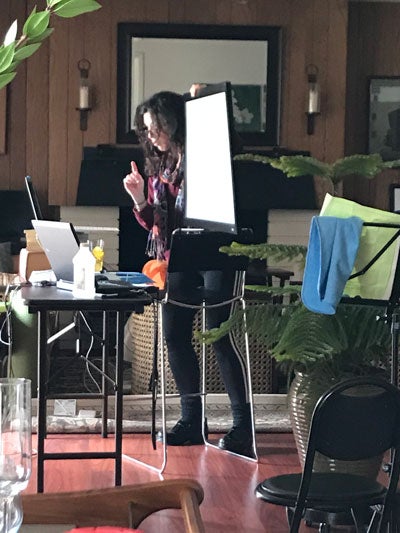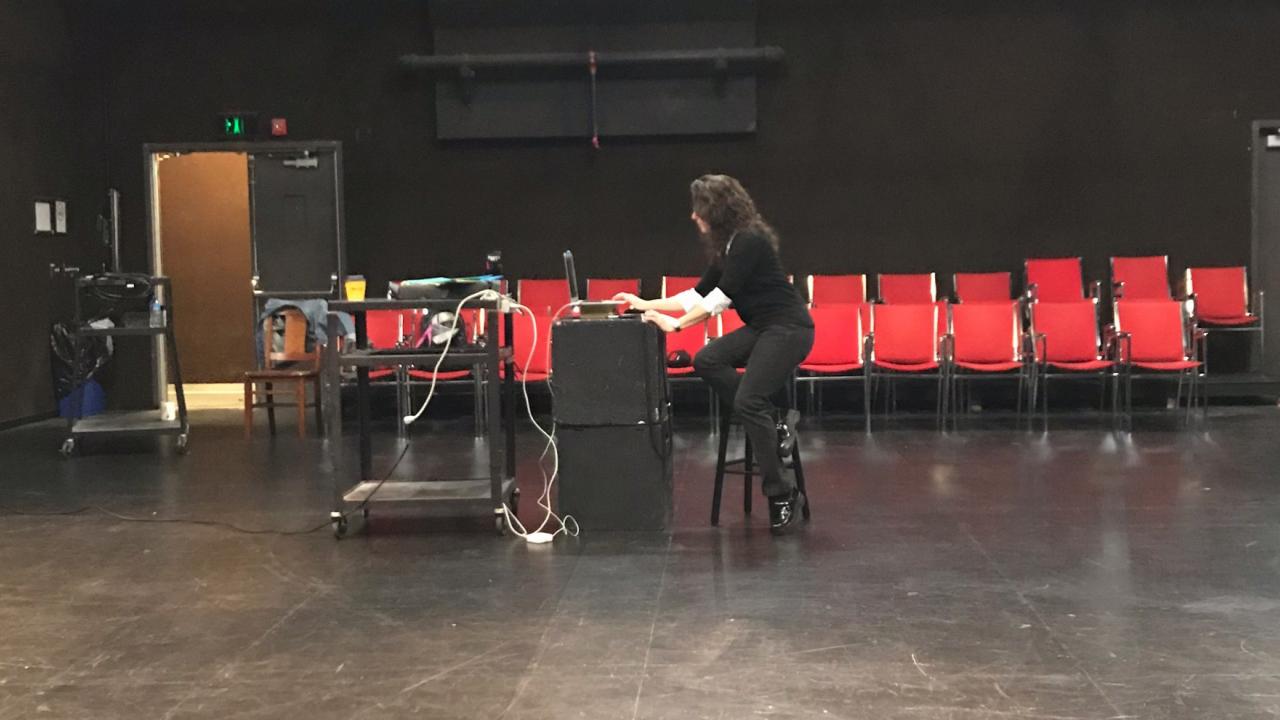By UC Davis Media Relations Intern Leigh Houck
In the past few weeks, professors of all disciplines scrambled to move their courses online as campus closed to prevent the spread of coronavirus. While it is difficult enough to move lectures online, this transition to virtual learning has presented particular challenges for classes that typically have studio time. One department in particular has encountered unique challenges moving to virtual class: the Department of Theatre and Dance. How do you teach movement and personal expression over a screen?
Continuing Lecturer and UC Davis alumna Michele Apriña Leavy can tell you a little about that. She is teaching two classes this quarter: DRA 21A-Fundamentals of Acting and DRA198-Presentation, Communications, and Collaboration Skills for International Students. DRA 198 is offered in conjunction with the UC Davis Global Studies Program. Read on for a Q & A session with Leavy about teaching the performing arts online.
Can you tell me a little about the challenges of moving your classes online? How long were you given to make this transition? We were given very little time to make these changes. I know that many of my colleagues who teach in the performing arts had to come up to speed very quickly with remote platforms, as well as think of ways to adapt their practical courses into something that could be taught through a video stream.
I can tell you that across social media platforms, groups of arts educators sprung up and people began sharing information with each other in a fast ; furious fashion. Some sent links to websites with ideas and resources; others shared exercises and pedagogy tips. It felt like the wild west!
Something I know for certain, from my career as a professional, from being an alumna of UC Davis, and from my 19 years of teaching here, is that in the most challenging of times the arts have a way of adapting and innovating. — Michele Apriña Leavy, lecturer
What are some particular challenges that come with moving performing arts classes online?
While it is possible to teach certain aspects of the performing arts online and/or remotely, it is not ideal. You can explain theory and have student read about it, but when it comes to the practical application students are at a disadvantage as they are unable to have true, real time interaction with another human being. It is particularly difficult having to relate to a pinhole of a camera that is separating them from another person. Even in an “acting for the camera class,” you still need another person in the same room with you so that you can respond honestly to one another. Nuance and subtlety become lost in translation, especially when the WiFi signal weakens and you experience buffering, or the picture freezes, or contact is broken altogether.
How did you resolve these challenges? What kinds of changes have you made?
I haven’t resolved all of the challenges. I’ve made this situation part of my research. I’ve had to adapt the courses considerably by finding other ways of using traditional acting exercises with the class. What happens is that these exercises become solo explorations rather than a collaborative process. Solo explorations are good, but eventually there is a need to move beyond them in the craft. That said, as the term progresses and the course evolves, I am finding creative ways to problem solve. It has become a true process of discovery.
Is there any interactivity between students for these classes (rehearsals, scenes, etc)? If so, how are you doing that virtually? How does this differ from your normal, in-person class? Being in the isolation of quarantine adds another layer of complexity. There can be limited interactivity between the students. With the Zoom application there is the ability to have “breakout rooms”, where students are put into smaller virtual groups to discuss and “practice” with a partner or partners, but the challenge of the virtual chasm remains the same. They are confined to their own spaces, both in reality and electronically.
What online platforms are you using? (Zoom meetings, prerecorded lectures, other?) Why?
In my classes, for safety and security reasons, I am using the only platforms which are being sanctioned by the university, those being Canvas and Zoom. How have students reacted to these changes? In know for a fact they are disappointed. They have said so. But those who remained in my classes are rallying, and they are committed to this process. I do my best to remain positive about the situation, and remind them that no effort is ever wasted! We CAN make something of this circumstance in which we find ourselves.
Will you keep any of these changes when we eventually return to in-person classes?
At this point, I’m not certain. I might use Canvas a bit more, but in terms of pedagogy, my jury is still out. I invite you to check back in with me at the end of the term.

Please feel free to share anything else that I didn’t cover.
Something I know for certain, from my career as a professional, from being an alumna of UC Davis, and from my 19 years of teaching here, is that in the most challenging of times the arts have a way of adapting and innovating. So do the sciences. Both share a process of discovery and creative problem solving. Both use communication and collaboration and neither exist in a vacuum. After all, there is a reason it is called the College of Letters and Science.
As instructors like Leavy come up with innovative ways to teach drama classes online, undergraduate theatre students are now putting skills they’ve learned in class into practice. Read on to learn more.
Students take center stage
In addition to continuing to take classes themselves, undergraduate theatre students are also bringing the arts to others. Undergraduate theatre students are teaching performing arts to students in grades three through 10. The UC Davis students teach free hour-long classes on the performing arts and include theatre games, verbal exercises, and monologue writing. These classes provide a creative outlet for children during this stressful time. Read: Students teach remote arts classes
